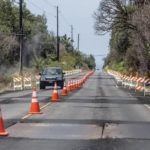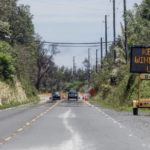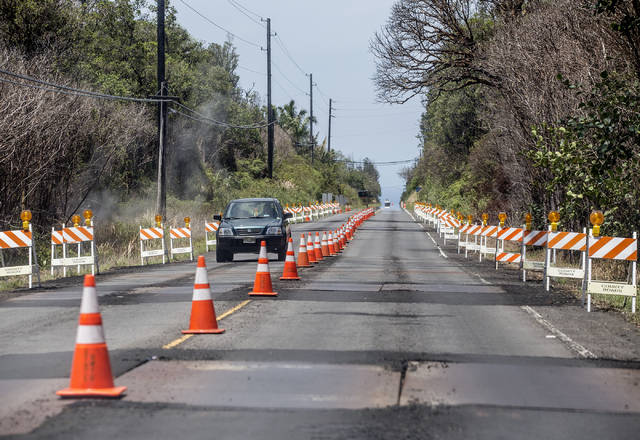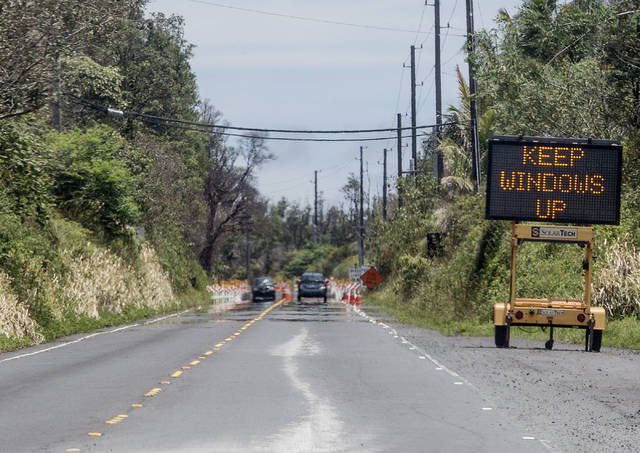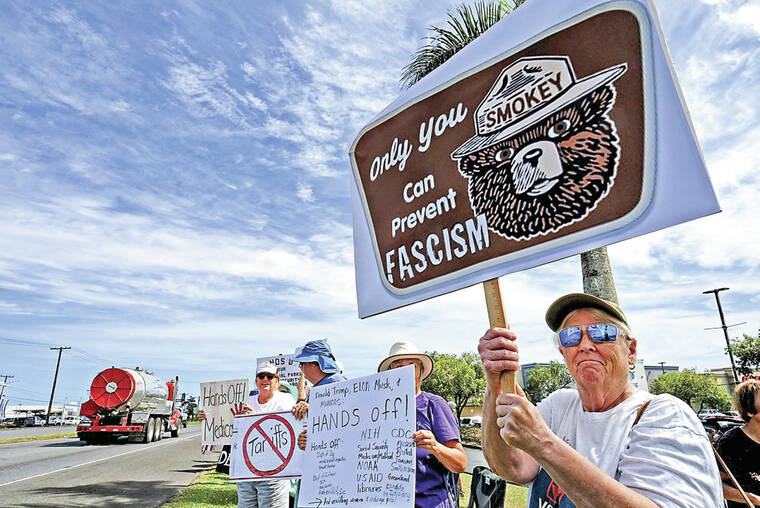Steel plates placed over hot ground cracks on Highway 130 are holding up, but the state Department of Transportation is having heat-resistant concrete made just in case the situation changes.
Don Smith, DOT Hawaii Island district administrator, said Hawaiian Dredging is making the material — known as calcium aluminate cement — on Oahu, and it could be ready for shipment in three weeks. He said it would only be placed on the cracks between Pahoa and Kalapana if temperatures on the plates increased significantly.
“The best-case scenario is that I won’t have to use them,” Smith said.
Cracks and dips are also forming on Highway 11 near Hawaii Volcanoes National Park because of seismic stress caused by the summit of Kilauea subsiding. Smith said he was going to have crews out there to make repairs on Thursday.
The county announced late Thursday that traffic was being restricted to one lane near Volcano Country Club.
As of Thursday, plate temperatures on Highway 130 were as high as 176 degrees, according to http://ops.punatraffic.com, which shows webcam images of the road and thermal imagery. A dozen plates were removed before the highway was reopened. About 30 others remain in place.
The heat comes from magma flowing underground to the eruption site in lower Puna.
Smith said the situation on the road has remained stable, with temperatures averaging 150 degrees.
The road there was opened to all traffic Tuesday after being restricted to residents since May.
Smith said DOT will keep the road open as long as possible, and he noted he is looking at other options, such as placing fill material on the road to create more of a buffer and using a span that can be lowered in place.
The state also re-established Chain of Craters Road as an emergency route and built another evacuation route to Alaili Road to bypass the cracks. A third evacuation route to Kaohe Homesteads is being planned.
DOT spokesman Tim Sakahara said keeping Highway 130 open is the “primary focus.”
Email Tom Callis at tcallis@hawaiitribune-herald.com.
